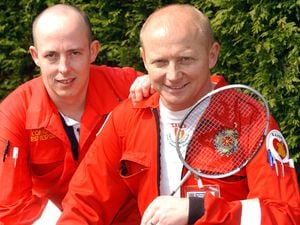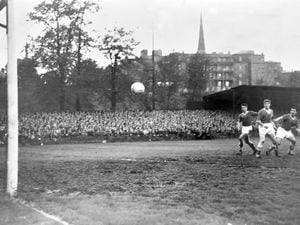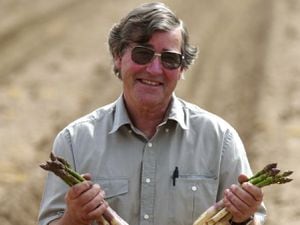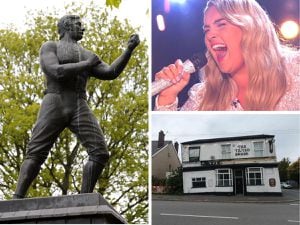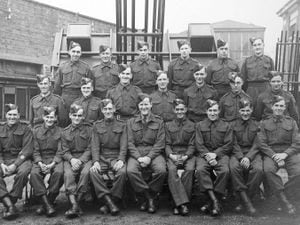VJ Day: Spontaneous outburst of joy at war's sudden end
On Okinawa, the last stepping stone to Japan, American troops were attacked by female civilians carrying spears, and Japanese officers brandishing swords would make suicidal assaults on the advancing tanks.
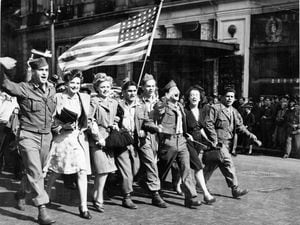
These were the levels of fanaticism which would have been faced by the Allies in an invasion of Japan in the autumn of 1945.
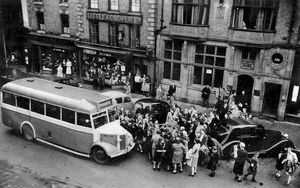
How many would have died? That is one of the big unknowns of history. Estimates at the time varied widely but the underlying theme was the same – there would be a massive cost in both Allied and Japanese lives.
Two atomic thunderclaps which destroyed the cities of Hiroshima and Nagasaki in August 1945 brought a sudden end to the Second World War.
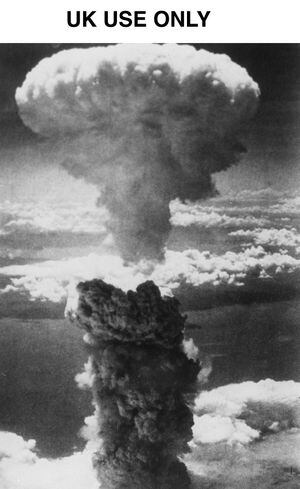
New American president Harry S. Truman lost no sleep in giving the go ahead to the use of weapons of mass destruction.
"I knew what I was doing when I stopped the war that would have killed a half a million youngsters on both sides if those bombs had not been dropped. I have no regrets and, under the same circumstances, I would do it again," he was to say later.
With major powers today having nuclear arsenals, the moral issues remain as relevant as ever.
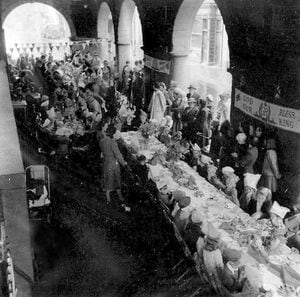
By the summer of 1945 Japan was on its knees. An Allied submarine campaign had enforced a total blockade, and B-29 bombers were roaming and bombing at will.
After the first atomic bomb was dropped on August 6 the Japanese took revenge by beheading 50 American prisoners.
On August 8 Russia declared war on Japan and invaded Manchuria, ramping up the pressure. The following day the second atomic bomb was dropped on Nagasaki.
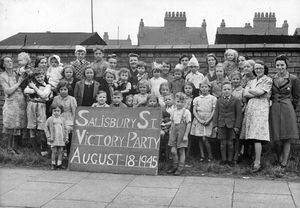
The primary target had been Kokura, but it was obscured by cloud. Afterwards the term "the luck of Kokura" passed into Japanese language.
Things hung in the balance. Military hardliners wanted to continue to fight to the end. The only person in Japan with the power to stop the war was Emperor Hirohito, who was worshipped as a living god.
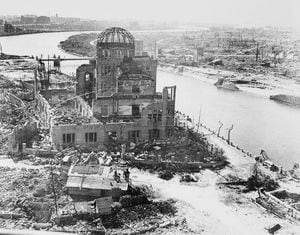
On August 14 he pre-recorded a speech accepting the Allies' surrender terms – although he never used the word surrender.
Diehard soldiers immediately stormed the Imperial Palace to try to destroy the recording and prevent the broadcast. The coup failed and his broadcast went out on August 15. It was the first time ordinary Japanese people had ever heard the voice of their Emperor.
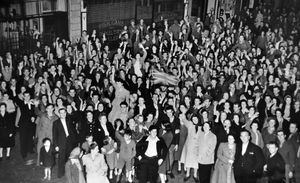
"The war situation has developed not necessarily to Japan's advantage, while the general trends of the world have all turned against her interest," he famously said.
"Moreover, the enemy has begun to employ a new and most cruel bomb, the power of which to do damage is, indeed, incalculable, taking the toll of many innocent lives.
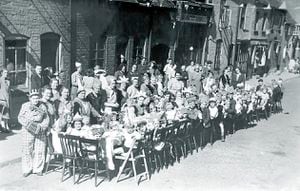
"Should we continue to fight, it would not only result in an ultimate collapse and obliteration of the Japanese nation, but also it would lead to the total extinction of human civilisation."
August 15, 1945 – VJ Day. The most bloody of all wars was over.
Among service personnel in the Far East the reaction was one of profound relief.
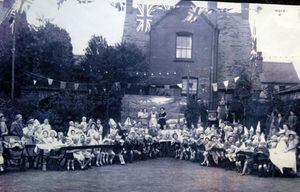
And back in towns and cities in Britain, because of the time difference the news came through at night and was the cue for riotous and joyful celebrations.
In Wolverhampton people in dressing gowns and pyjamas were among the crowds who began to gather in Queen Square soon after Prime Minister Clement Attlee's midnight broadcast.
"Cars were being driven by people who had obviously just got out of bed," reported the Express and Star as day broke on Wednesday, August 15.
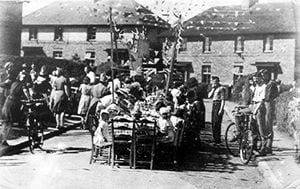
Numbers quickly swelled as more folk joined the revelry and, in a repeat of what had happened in May's VE Day celebrations, "quite early on the statue of the Prince Consort had a number of live companions on his bronze mount – youths who took up a vantage point there and held it against allcomers until the crowd dispersed."
In Shrewsbury night-time streets which had been largely deserted rapidly began to fill up with a noisy throng.
The E&S carried a photo taken at 1am near the American Red Cross Club in Castle Street, outside of which a bonfire was lit in the street – one of several such fires around the town.
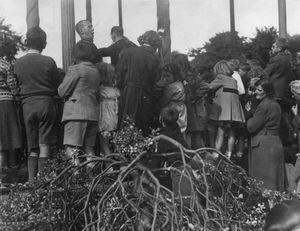
Some young women were still in their curlers, and some in night attire "without even dressing gowns." Dustbin lids were thrown in the air amid the revelry centred on the Square, where those in party mood included ATS (Auxiliary Territorial Service) girls from local billets in their pyjamas.
"Lord Clive in the Square was fitted with a makeshift turban, pint pot and watering can and bedecked with flags. Darwin, another 'victim' of boisterous mirth, supported several persons on his lap," reported the Wellington Journal & Shrewsbury News.
In the morning a chalked sign appeared outside the American Red Cross Club: "Well, you good folk, it's all over. Thanks to us all, they did not knock the cliffs off Dover. We will remember you."
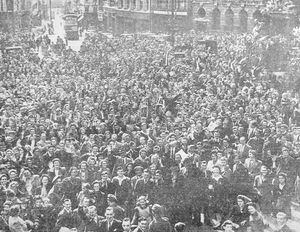
In Dawley a large crowd assembled round the Captain Webb Memorial just after midnight, and there was an accordion band, singing, and dancing.
These were just examples among countless similar spontaneous celebrations across other towns and the uproarious scenes were repeated the following night. This time the National Fire Service was called to Queen Square in Wolverhampton where wooden fish boxes had been set alight, putting the long-suffering Prince Consort's statue in danger from the flames.
A number of people were treated for burns caused by fireworks.
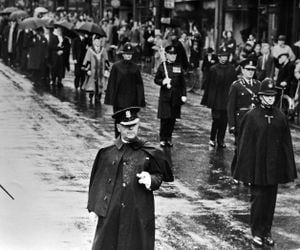
There also came the opportunity for more organised events, with street parties for children – there were at least 48 in just two days in the Bilston area – and thanksgiving services in churches.
There was a fanfare on silver trumpets from the roof of Wolverhampton Civic Hall by 12 trumpet players of the Royal Artillery Orchestra.
And for the first time since the days of the flower show, Wulfrunians saw the West Park glittering with fairy lights festooned along the main drive round the bandstand.
Bonfires were lit on almost every waste patch or suitable place, and one of the biggest of all was on the Tenscore at Sedgley, which formed part of the official celebrations, which included fireworks and dancing.
Relief was everywhere. It was all over at last. Now came the challenges of living in the nuclear age.

